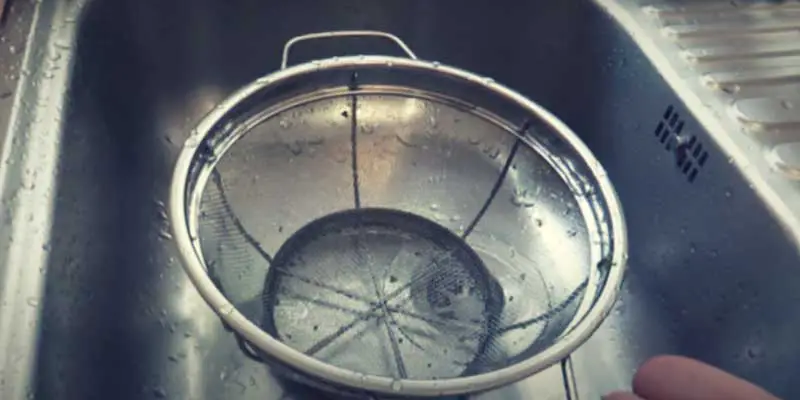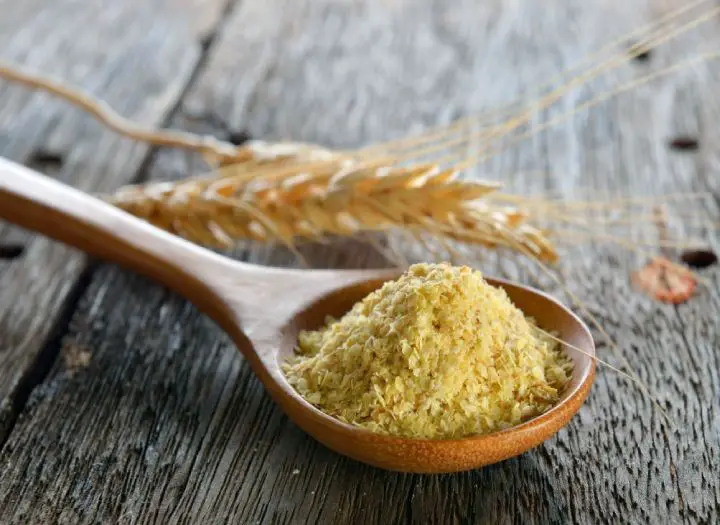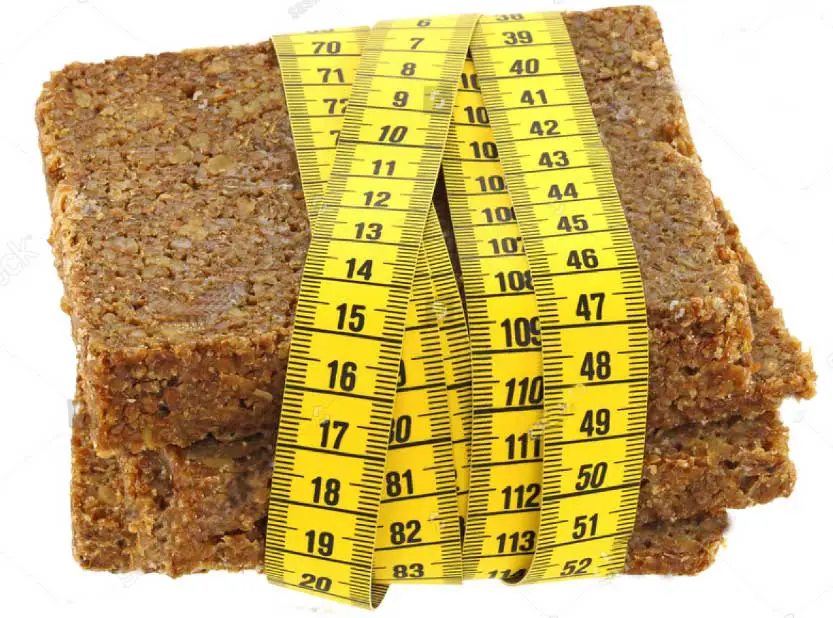The process of cleaning colander may seem a bit challenging, but the truth is, it isn’t. You may want to learn how to clean a colander because the whole process is just like a walk in the park. So easy!
These colanders are used to strain pasta and rinse vegetables. They feature small holes that allow water to drain through them holding solid debris that should be washed clean after use.
This article will guide you on how to get rid of all the starch debris on your colander, how to sanitize it, and how to clean rust stains off your colander. Keep reading to understand more: –
Relevant Topic:
Colander Cleaning Process
Here is how you should clean your colander.
What you will need:
- A large bowl or sink
- Bristle scrubbing brush
- Kitchen towel
- Dish detergent
- Toothbrush (old)
Cleaning Instructions
Follow the instruction step by step.
Step-1: Fill the sink or basin with some hot or warm water.
Step-2: Add the liquid dish detergent into the water.
Step-3: Place the strainer into the sink or basin and let it soak for up to 15 minutes. If your plastic colander doesn’t sit well in the water, add a heavy item that will make it sink into the water.
Step-4: Take your colander and turn it upside down under running water. This will help eliminate any particles/food debris on the opposite side of the colander.
Step-5: Use your scrubbing brush to scrub clean the colander. You can opt to use an old toothbrush too.
Step-6: If the food debris does not clear, use a kitchen towel to scrub the insides of your colander.
Step-7: Keep scrubbing the colander while rotating your towel till all debris is gone.
Step-8: Rinse with lots of water and let the colander air dry.
Colander Cleaning Tips
- Do not let the colander sit for long after using it, so the starch residues do not dry. It gets more difficult to clean with all the dry residue.
- Avoid using any abrasive pads or cleaners.
- After cleaning, ensure you thoroughly dry your colander to prevent the formation of water spots and minimize rusting chances for the metallic ones.
How to clean and Sterilize Colander
Sterilizing colanders is a very safe practice in ensuring food safety. So, how do you sterilize it?
A. Boiling
Firstly, note that this method is not safe with plastic colanders. You will fill a large pot, enough to fit the colander with boiling water, then place the colander into it and cover the pot. Let the water boil for a further 5 minutes. You should keep checking the water, so it doesn’t dry off completely and add some more if necessary.
Remove the pot from the heat source and remove your colander with a pair of tongs. Cool the colander by letting cold water run over it under a faucet. You can then allow your colander to air dry.
B. Cleaning With Bleach
You will need three basins with different solutions. The first basin should be filled with some warm water and detergent into it. The other basin should be filled with plain warm water and the last one with bleach solution.
In the first basin, you will wash your colander well and rinse it off in the second basin. The third basin is where the sterilization process happens, and you will soak the colander into the solution for at least 2 minutes, then remove it and dry it accordingly.
How to Clean Rust Stains off Your Colander
Does your colander have stubborn brown rust spots, and you don’t know how to go about it? Well, here’s how: –
1. Soak in white vinegar
When you soak your colander in vinegar, the rust reacts with the vinegar by dissolving it. Soaking for at least 15 minutes will give the best results. If your colander is too large, pour the vinegar onto its surface evenly and then leave it overnight. Another way to get rid of the rust is by soaking a cloth with vinegar and wiping it dry.
Pros:
- Easy cleaning method.
Cons:
- Needs overnight soaking.
2. Clean with baking soda
Here, you will make a paste of baking soda and water. The next step should be adding some lemon juice and covering it with salt, and leaving it to sit for 2 hours. The squeezed lemon peel should be used to scrub off the rust. If the rust stains are still visible, scrub the colander lightly with a brush. Rinse off the colander with plenty of water and allow it to dry.
Pros:
- A simple method with a common ingredient.
Cons:
- You don’t clean it right away as it has to first sit in the water.
- Might need a ball of steel wool for cleaning, and therefore need some elbow grease.
3. Clean with citric acid
Although citric acid is very efficient in getting rid of rust stains, it may peel off coatings. This method is best with lesser stubborn stains on your colander. To clean the rust, have a basin of hot water mixed with 3 tablespoons of citric acid. Soak the colander for up to 12 hours and scrub off the rust. Rinse the colander and dry it appropriately. Air drying is the best method.
Pros:
- Very efficient.
Cons:
- The ingredient lacks in so many homes but can be found in the nearest store.
4. Use potato and dish soap.
Here, you will cut a potato into half and then dip the cut end in dish soap. The end side of the potato should be used to scrub the rusty points of your colander. Once the potato starts slipping, cut a piece of it and dip it in the dish soap again. You should keep repeating the process until no visible rust marks are seen in your colander. Lastly, rinse the colander off in a faucet and dry well.
Pros:
- Easy cleaning method as it uses items you can grab in your pantry.
Cons:
- Cleaning can be messy. Use this method in outdoor space to prevent so much messiness.
5. Clean with lemon and salt
With the lemon and salt cleaning, you will coat the rusted area with salt, cut your lemon in half and squeeze the juice over the area. Leave the mixture to sit, then scrub off the rust with the lemon peel. Repeat the procedure until all rust stains are gone. Ensure you rinse with plenty of water and allow it to air dry before storing it away.
Pros:
- It’s a less abrasive method.
Cons:
- It might take longer if the rust stains are stubborn.
Tips on rust removal
- Scrub aluminum colanders with aluminum foil by forming a large ball with it with the shiny side up.
- You can grab a Coca- Cola soda and use it to clean rusts off aluminum colanders. Cola contains phosphoric acid that eats away rust.
- If you are out of citric acid and you need a quick rust clean-up of your colander, you can reach that ketchup in your drawers and use it in place of citric acid. Ketchup is filled with citric acid. To work effectively, you can mix it with washing soda to clear off the rust stains.
Video: How to Clean a Colander
Frequently Ask And Question
what size colander do i need
It depends on the size of your pots and pans. A colander that is 6 inches in diameter should be fine for most uses, but if you have larger pots or pans, then a 9 inch or 12 inch colander may be more appropriate.
how many holes in a colander
A colander typically has six holes, but it can vary depending on the type. There are strainers with between four and eight holes, while sieves have a single hole.
Conclusion
I now hope using your colander will be much fun as there will be no cleaning headaches thereafter. The process is simple and very straightforward. And with the many rust removal methods, I hope your colanders will stay rust-free as long as you incorporate the above strategies.
Rita C. Donnell (Jennifer) has spent the last 26 years studying and practicing nutrition science. She has used a larger part of this time in improving people’s livelihoods. She has done so by coming up with unquestionable ideas on how to tackle food problems in her community. Readmore



